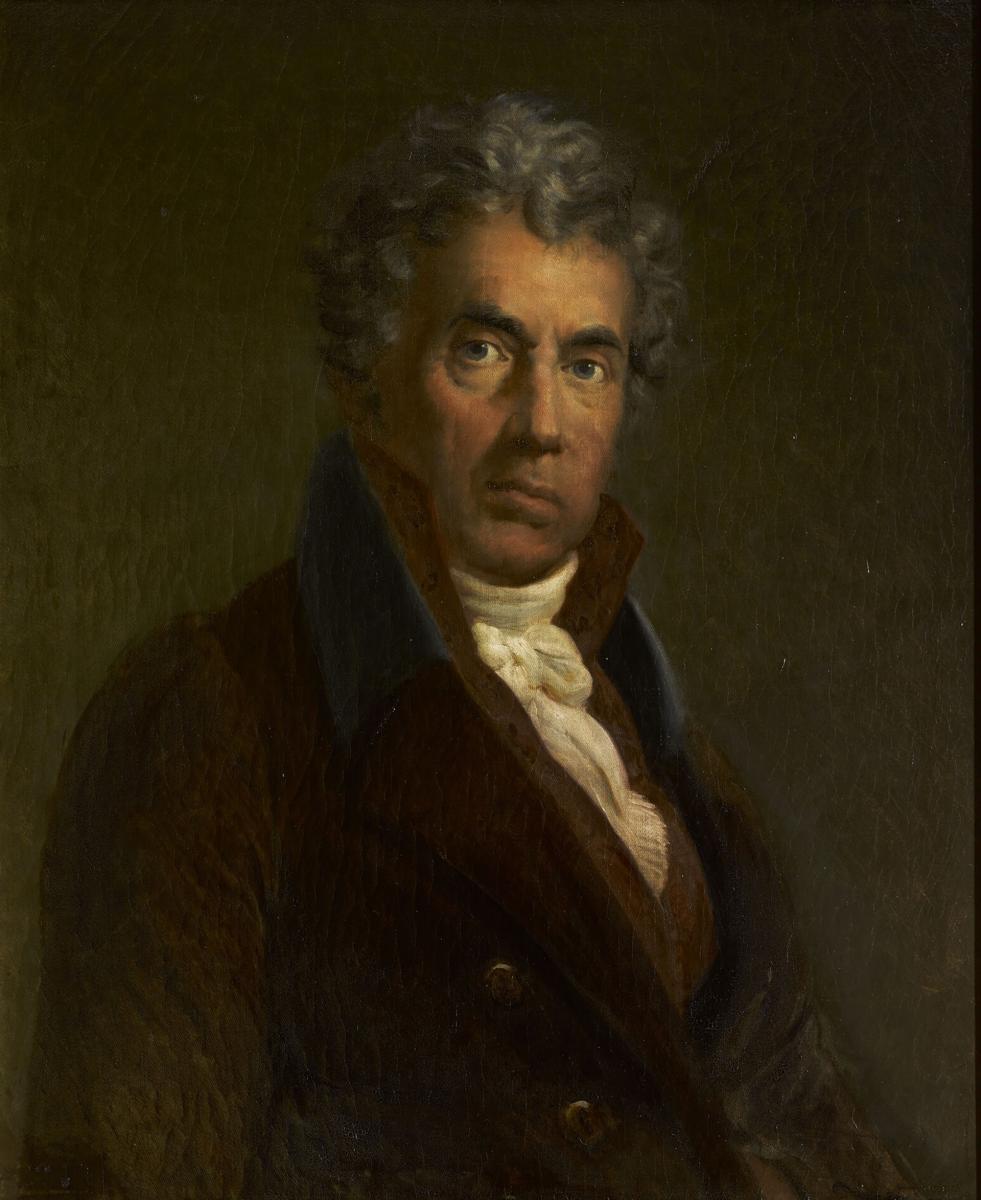First Painter of the Emperor

Jacques Louis David, painter (1748-1825)
Marie Eléonore Godefroid
1843
© RMN-GP (Château de Versailles) / © Franck Raux
As an active revolutionary and regicide, he painted theRoyal Tennis Court Oath (1791-1792), unfinished, and the portrait of The death of Marat(1793).
Under the French Consulate he used his artistic talents to serve Napoleon Bonaparte, and was commissioned by the King of Spain, who had recently become a French ally, to paint a portrait of the First Consul, Napoleon Crossing the Saint-Bernard(1801), which was a great success, and inspired the subject of the painting to commission several more reproductions for official residences and public buildings.
After the proclamation of the Empire, he devoted his services to the Emperor and commemorated the coronation through vast compositions which he spent years completing: the Coronation of the Emperor in Notre Dame (1804-1807), and the Distribution of the Eagles on the Champ-de-Mars (1808-1810).
Named the First Painter of the Emperor, he was considered one of the best painters in Europe, and never ceased to pursue historical painting, with The Lictors Bring to Brutus the Bodies of His Sons (1789), The Intervention of the Sabine Women (1799) and Leonidas at Thermopylae (1814).
He was required to leave France due to the Bourbons’ return to power and he exiled himself to Brussels where he continued his work in an extreme Neoclassical style despite the rise of the Romantic movement. There he completed a second version of his painting Coronation (1808-1822).
His work at Versailles
Versailles, along with the Louvre, came to house a large number of the artist's workdue to various historical circumstances. Several of his major works are exhibited at Versailles:
The Royal Tennis Court Oath, a masterful composition that remained unfinished and was even defaced by the artist, still remains an icon of revolutionary painting. It is exhibited in the Coronation Chamber. The second, and perhaps the best version of the Coronation of Napoleon is also exhibited at Versailles (the first version, formerly at Versailles, was moved from the palace to the Louvre in 1889); as well as its counterpart, the Distribution of the Eagles to the imperial army and two different versions of his famous work, the definitive icon of the Napoleonic legend, Bonaparte, First Consul, Crossing the Saint Bernard (1800-1802), not to mention all the preliminary versions of his work The Death of Marat and of the portrait of Pope Pius VII.

















